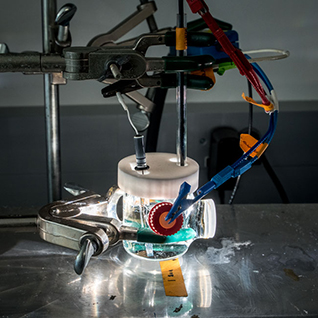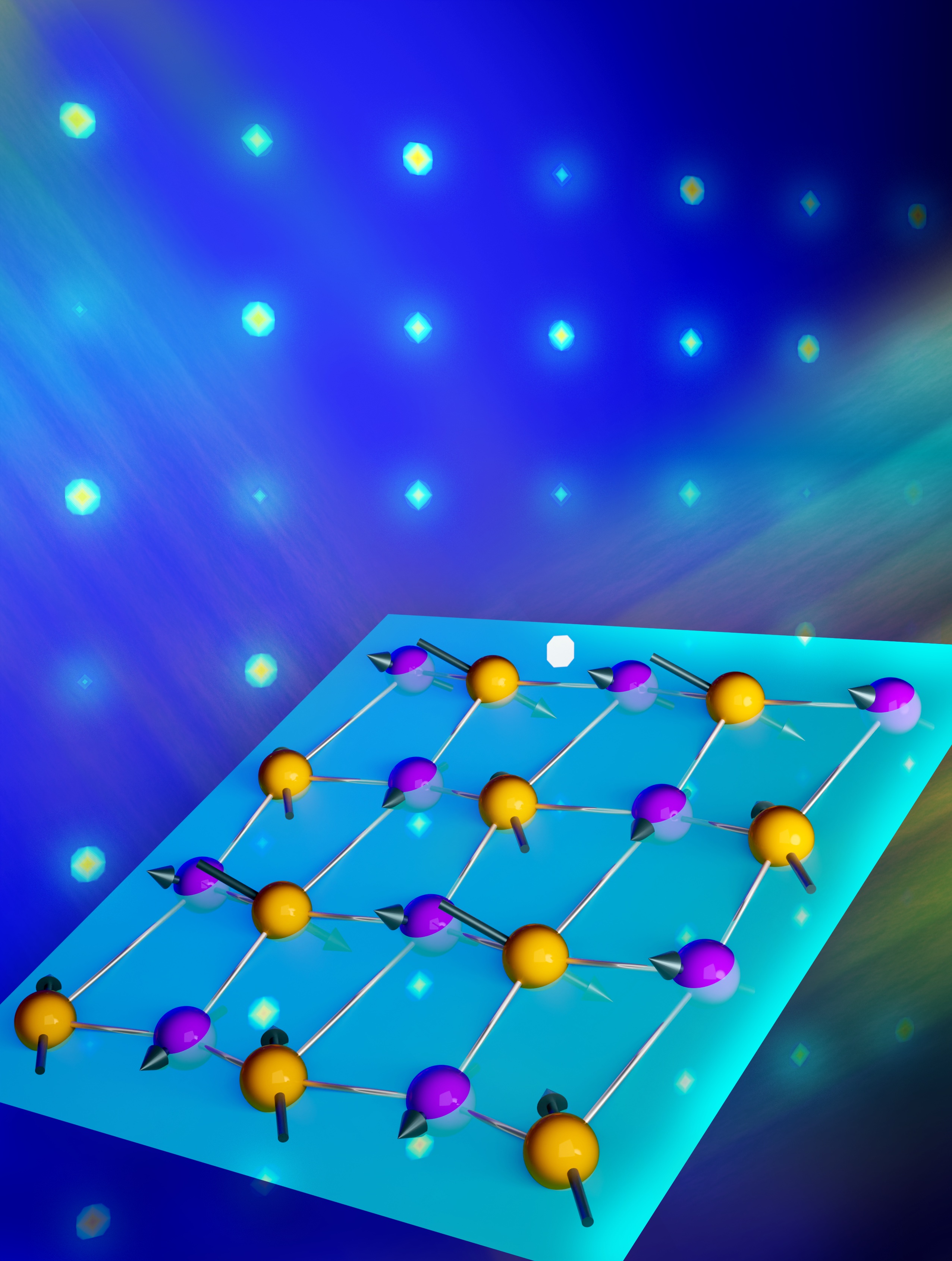Making Sense of Failure in Light-Harvesting Semiconductors
Researchers reveal the factors that affect the stability of semiconductors in solar fuel devices to aid the discovery of next-generation materials.

The Science
While metal oxide semiconductors have been widely considered to exhibit outstanding durability, performance degradation in these solar energy harvesting components is frequently observed. Understanding the degradation is essential for developing stable, efficient photosystems. To address the failure, a team at the Joint Center for Artificial Photosynthesis uncovered the mysteries of photochemical instability in a widely used semiconductor. Their results reveal previously unpredicted pathways to degradation and provide insights.
The Impact
Production of fuels from sunlight, carbon dioxide, and water relies on semiconductors that can resist corrosion in harsh operating conditions. Predicting and understanding the origin and pathways associated with the degradation of semiconductors is crucial to designing a next generation of robust and efficient materials.
Summary
Artificial photosynthesis, which is the process of conversion of sunlight, carbon dioxide, and water into fuels, relies on chemically stable materials that can efficiently harvest solar energy under harsh operating conditions. Artificial systems must be constructed from robust components that can sustain years of operation without the need for energy-intensive and costly repairs. Currently, the lack of durable and efficient semiconductors and the complexity of fabricating stable assemblies are major roadblocks to the realization of viable artificial photosystems. In recent years, significant effort has been directed at developing novel protection schemes that can prolong the lifetimes of otherwise unstable materials. While these approaches have met with success, understanding – and then predicting – corrosion processes of semiconductors will greatly aid the discovery and development of materials that are inherently stable. To promote such understanding, scientists from the Joint Center for Artificial Photosynthesis used experimental and theoretical tools to assess the mechanisms underlying the degradation of bismuth vanadate in the working conditions present in a solar fuels device. Bismuth vanadate is currently one of the best materials available for fabricating semiconductor photoanodes to split water into hydrogen fuel and oxygen. The study reveals that kinetic factors play a critical role in defining corrosion pathways. Indeed, accumulation of light-generated charge at the surface of the bismuth vanadate destabilizes the material. These and other insights will guide approaches to stabilization and aid the search for durable, visible-light-absorbing materials for the next generation of solar-to-fuel conversion systems.
Contact
Francesca M. Toma and Ian D. Sharp
Lawrence Berkeley National Laboratory
fmtoma@lbl.gov, idsharp@lbl.gov
Funding
This study is based on work performed at the Joint Center for Artificial Photosynthesis, a DOE Energy Innovation Hub, supported through the U.S. Department of Energy, Office of Science, Office of Basic Energy Sciences, Division of Chemical Sciences, Geosciences, and Biosciences under award number DE-SC0004993. Imaging work at the Molecular Foundry was supported by the U.S. Department of Energy, Office of Science, Office of Basic Energy Sciences under contract number DE-AC02-05CH11231. The in situ electrochemical atomic force microscopy part of this work was supported in part by the Laboratory Directed Research and Development Program of Lawrence Berkeley National Laboratory under U.S. Department of Energy contract number DE-AC02-05CH11231. V.K. and F.M.T. acknowledge support from the Bavaria California Technology Center programme, project number 2015-1.
Publications
F.M. Tom, J.K. Cooper, V. Kunzelmann, M.T. McDowell, J. Yu, D.M. Larson, N.J. Borys, C. Abelyan, J.W. Beeman, K. Man Yu, J. Yang, L. Chen, M.R. Shaner, J. Spurgeon, F.A. Houle, K.A. Persson, and I.D. Sharp, “Mechanistic insights into chemical and photochemical transformations of bismuth vanadate photoanodes.” Nature Communications 7, 12012 (2016). [DOI: 10.1038/ncomms12012]
Related Links
Lawrence Berkeley National Laboratory Press Release:New Discovery Could Better Predict How Semiconductors Weather Abuse
Joint Center for Artificial Photosynthesis Website
Highlight Categories
Performer: University , DOE Laboratory , SC User Facilities , BES User Facilities , Foundry
Additional: Collaborations , International Collaboration



